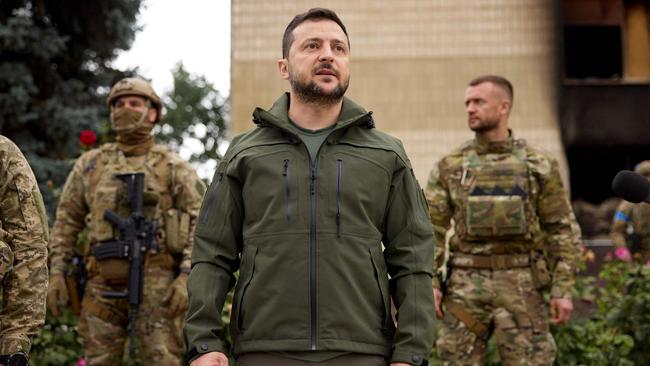
It has stoked political tensions and contributed to supply chain disruptions while compounding global inflation.
Through this Ukraine’s President Volodymyr Zelensky has unified his nation, while doggedly outmanoeuvring Vladimir Putin, the hardline Russian president who now faces rare criticism at home and cooling support for the conflict among important allies China and India.
In recent weeks Ukraine’s defence forces have reclaimed dozens of towns and secured more than 8000sq km of previously Russian-controlled territory in the northeastern Kharkiv, according to officials. The chaotic exit by Russian forces has meant valuable military hardware including tanks and weapons have been left behind.

The developments do not mean the war is over and Europe’s resolve will be tested to the extreme in coming months as the region faces a winter of energy shortages. Western sanctions over Russian gas supplies will see inflation continue to rise. There also is the possibility that Putin could hit back in a bigger way, although that carries political risk for the Russian leader.
The West has sent tens of billions of dollars worth of support in terms of advanced weapons and additional military intelligence, but through the conflict Zelensky has been the one to rally his people.
On paper Russia dominates Ukraine in every economic and military score, yet the smaller country is fighting hard and carving out significant wins. There are lessons to be learned from this.
Communicate goals
Heading into the conflict many significantly underestimated the 44-year-old Zelensky.
Russia was building up troops around Ukraine’s borders, there were suggestions in diplomatic circles that he was out of his depth and Russia’s campaign would be quick.
A former comedian and actor who ultimately ran his own TV production company, Zelensky had no political experience before being voted in as Ukraine’s President in 2019. However, his career developed his instincts on the importance of responding to an audience.
From the moment Putin launched his invasion, including the build-up of troops around Ukraine’s borders, Zelensky has presented a simple strategy to his people: repel the occupiers.
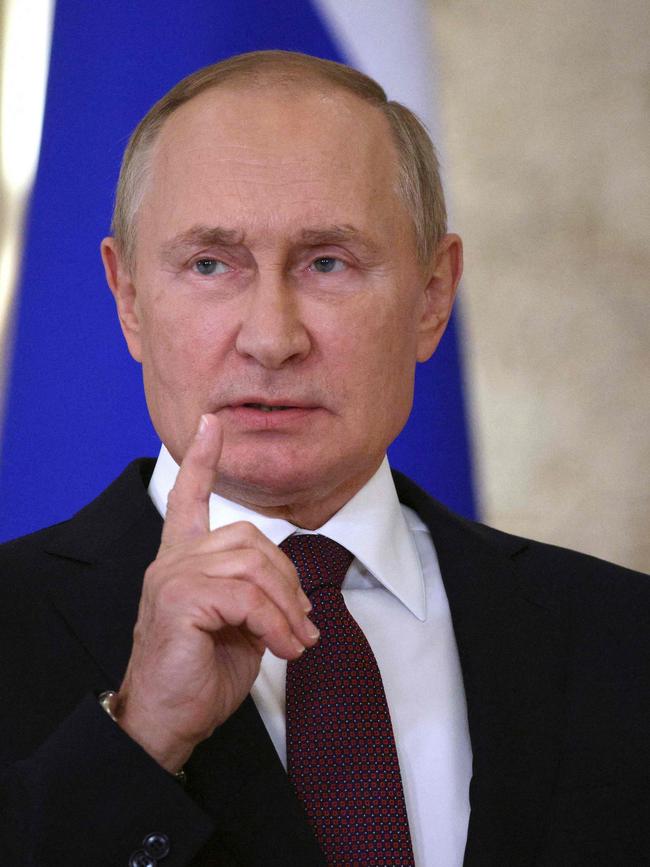
He has pushed this narrative with clear, consistent messaging for months on end, leaving no room for ambiguity or compromise. His speeches regularly draw on unity and teamwork as a path to victory for Ukrainians.
Zelensky has ruthlessly used video and social media channels to drive this, including the Telegram app, which is one of the most popular messaging platforms used in Ukraine and Russia. He still speaks Russian in some videos to sway public opinion among middle class Russians.
The President has effectively taken his message to the international stage, being accessible and highly visible. These international appeals have a clear goal: build a coalition of opposition against Russia, to secure weapons and financial support.
He finetunes his international comments to his audience. Addressing the Australian parliament in March, Zelensky talked about threats from large external forces and invoked memories of the downed Malaysian airliner MH17. To the US Congress, also that month, he spoke about Pearl Harbour and 9/11 attacks. Be it speaking to business leaders, celebrities or world leaders visiting Kyiv (including Australian prime minister Anthony Albanese) Zelensky’s messaging has been repetitive, consistent and clear.
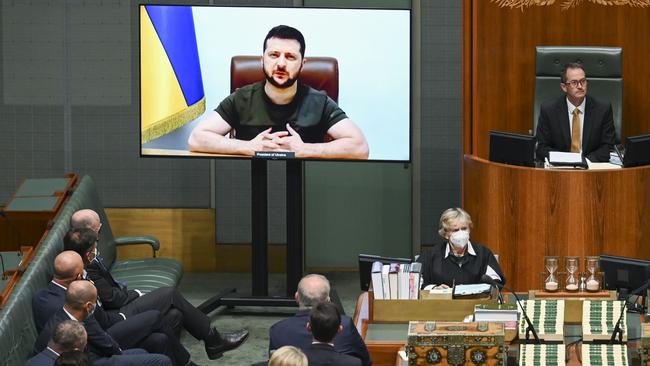
Contrast this with Putin. Through the war, the goals of the Russian campaign have been confused. From the description of the “special military operation” the narrative is continually shifting. When Russian troops were unable to take Kyiv, Moscow’s goals changed from “demilitarisation and denazification” of Ukraine to the liberation of Donbas in the country’s east.
Keep it local
The different leadership style of the opposing armies is significant, and this theme should be familiar to big businesses that often struggle to get the right structure.
The Russian defence forces are highly centralised, with decision-making pushed up to Moscow. This is a recipe for delayed responses and decisions that don’t reflect conditions on the ground.
Ukraine has empowered its local commanders to make the call based on their own instincts.
Charles Miller is a senior lecturer at ANU’s School of Politics and International Relations, a renowned expert on military conflicts and strategy. He points out traditional Soviet military culture through two world wars is based around very tightly scripted actions and control running through levels of the organisation. The Ukrainian army inherited this structure and right into the 2000s it was still very much based on a highly centralised Soviet-style system.
However, Dr Miller points out that since the invasion of Crimea in 2014, which exposed how weak Ukraine’s military had become, Kyiv set about changing its military organisation – including bringing in a lot of concepts and doctrines from NATO, specifically the “mission command” structure which emphasises decentralisation.
“Basically, you try to put as much responsibility and decision-making power in the hands of the person on the ground, and they can be as low as a sergeant, or even perhaps a private under certain circumstances,” said Dr Miller.
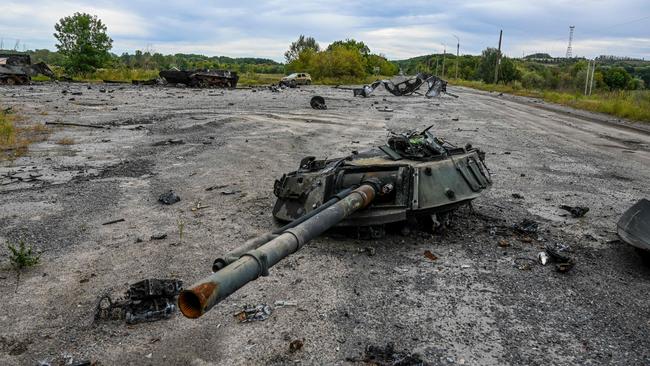
“The idea is that all of them know what the overall strategic goal, the overall operational goal of their mission is. But in terms of how they actually accomplish that goal, that’s up to them.”
There are risks to this organisational philosophy and specifically it comes down to training. The lower-level subordinates need to have a good understanding of what they are doing and the goals of the operation. And like any well-run team they need to have confidence in others at the same level of hierarchy.
There are doubts over the level of Russian training and the reliance on conscripted soldiers, who reportedly are confused about their assignments and what they are fighting for. Adding to problems has been the poor performance of Russian equipment.
Lead from the front
Always dressed in military olive green and rarely seen in his navy blue suit since the war started, Zelensky leads from the front. Last week he visited the recaptured city of Izyum, which just days earlier had been Russia’s main operational hub in the region. Footage of Zelensky watching the Ukrainian flag being raised went around the world while shells were exploding in the distance. He celebrates his soldiers, is comfortable with them and consistently praises them.
“I am grateful to each of our warriors who do everything to bring victory closer,” Zelensky said at Izyum.
Even in tougher times during May and June, when Ukraine was losing territory in the east, the President still visited the dangerous front lines.
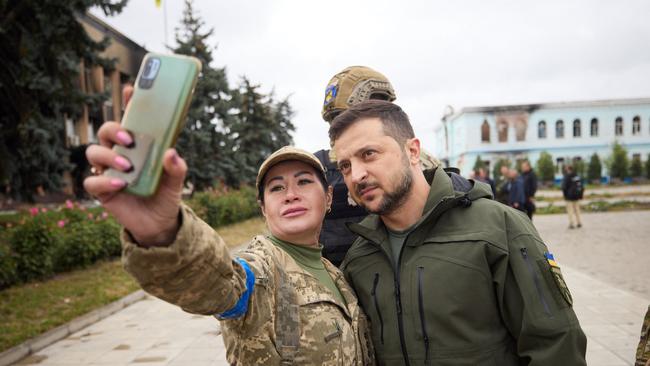
Dr Miller said much of Zelensky’s credibility was forged in the early days of the Russian invasion, when his life was under threat and Washington offered to evacuate him from Kyiv. Zelensky reportedly replied to US officials: “The fight is here: I need ammunition, not a ride.” Regardless of the response, Zelensky stayed in Kyiv, filming himself on a smartphone, even as Russia closed in with heavy shelling of the capital.
“That’s a sign of a leader who is leading from the front, who is sharing risks with his soldiers and with his civilians, who is not afraid,” Dr Miller said.
“Everything that he said, from that moment on (of refusing exile), had a degree of credibility with the Ukrainian people and the army, that he just never would have got if he’d been taken away.
“Through his actions he has demonstrated a degree of courage and sincerity and integrity, which I think is what makes him such an impressive leader.”
johnstone@theaustralian.com.au




Ukraine has changed the momentum of the war with Russia as it reclaims large and strategically important areas of the northeast and Kyiv forces a rushed withdrawal of Russian soldiers. The gruelling conflict, following Russia’s invasion in February, has been felt around the world, impacting the global economy and pushing up prices of food and energy to sky-high levels.